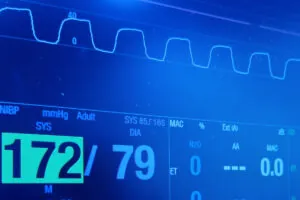Always ask yourself the right questions and follow a process. Accurate and complete documentation of medical necessity is key for both the patient and your organization. When done right, documentation leads to a higher quality patient experience, improved communication and sound clinical and financial outcomes. We’re breaking down the most important do’s and don’ts for documentation to ensure success for you and your organization.
The Centers for Medicare & Medicaid Services (CMS) unequivocally states the justification for admission must be “clearly and completely” documented in the medical record, putting us in the unique position to incorporate complete medical evidence in the medical record. We have the opportunity to explain in detail why the expectation of the need for care in the inpatient setting is appropriate in the context of that patient’s acute condition.
Documentation should contain the history and comorbidities to establish acuity in the context of the current illness. Clearly define the severity of illness the patient’s medical needs, the intensity of the services rendered and the risk of adverse outcome, including applicable evidence-based criteria. Including these details helps the payor understand why the patient requires the treatment ordered.
Think of the five W’s, and take it a step further:
Who? What? Why? When? Where? How? Because?
Document your concerns and ask yourself these questions:
- What are you treating?
- Why are you worried?
- What is the risk of adverse outcome? What are you suspicious of?
- Where should the patient receive this care? Can the patient go home or do they require hospitalization? Should the patient be Inpatient or Outpatient with Observation Services? Should the patient go to the floor or Intensive Care Unity (ICU)?
- When does the patient need these services; now or can they be scheduled as Outpatient?
- Why does this patient require hospitalization?
- How should these services be delivered?
Patients presenting with signs and symptoms that will require assessment and reassessment before a final diagnosis can be made should start as Observation
- Document assessments and reassessments as well as your plan.
- Include your rationale and what additional testing will be done.
- If you are going to change the patient to Inpatient, clearly detail why that patient requires additional care in the hospital and what that care will be.
Documentation Do’s and Don’ts
Follow these to ensure correct documentation of medical necessity:

Additional Documentation Tips
- Illustrate what makes the patient so sick “Think in Ink”
Document the severity of illness and intensity of services that accurately describes the care you are rendering. What services can be given only at this level of care? For example: Neuro checks every 2hrs or IV antibiotics every 8 hours. Why IV? Why not oral? - State why the treatment plan is appropriate
Remember the key word “because”, even if you don’t specifically write it. Linking symptoms to the diagnosis, using the words “due to, secondary to, possible or suspected” will help clarify the picture. - Show details supporting your decision
Medical decision-making is complex, so write down all the facts that go into your plan. Denials occur due to lack of supporting documentation. For example: acute respiratory failure without supporting hypoxia, acute kidney injury without baseline creatinine. - Don’t copy and paste boilerplate statements
Repeatedly using the same justification for continued length of stay weakens your arguments. For example: no acute events overnight does not highlight why the patient still needs to be in the hospital. - Also write for the auditors
Preapproved Outpatient procedures should start in the status authorized by the payor to prevent denials and rework. Be clear, concise and timely. Consultants and others on the care team need to know your plan. - Treat weekends just like weekdays
Weekend stays are just as costly as weekday stays. Reassess patients on an ongoing, daily basis and document why they require continued care in the hospital.
Remember to not leave the MEAT out of your documentation.
What are you Monitoring?
What are you Evaluating?
What are you Assessing for safety and improvement?
What are you Treating?




